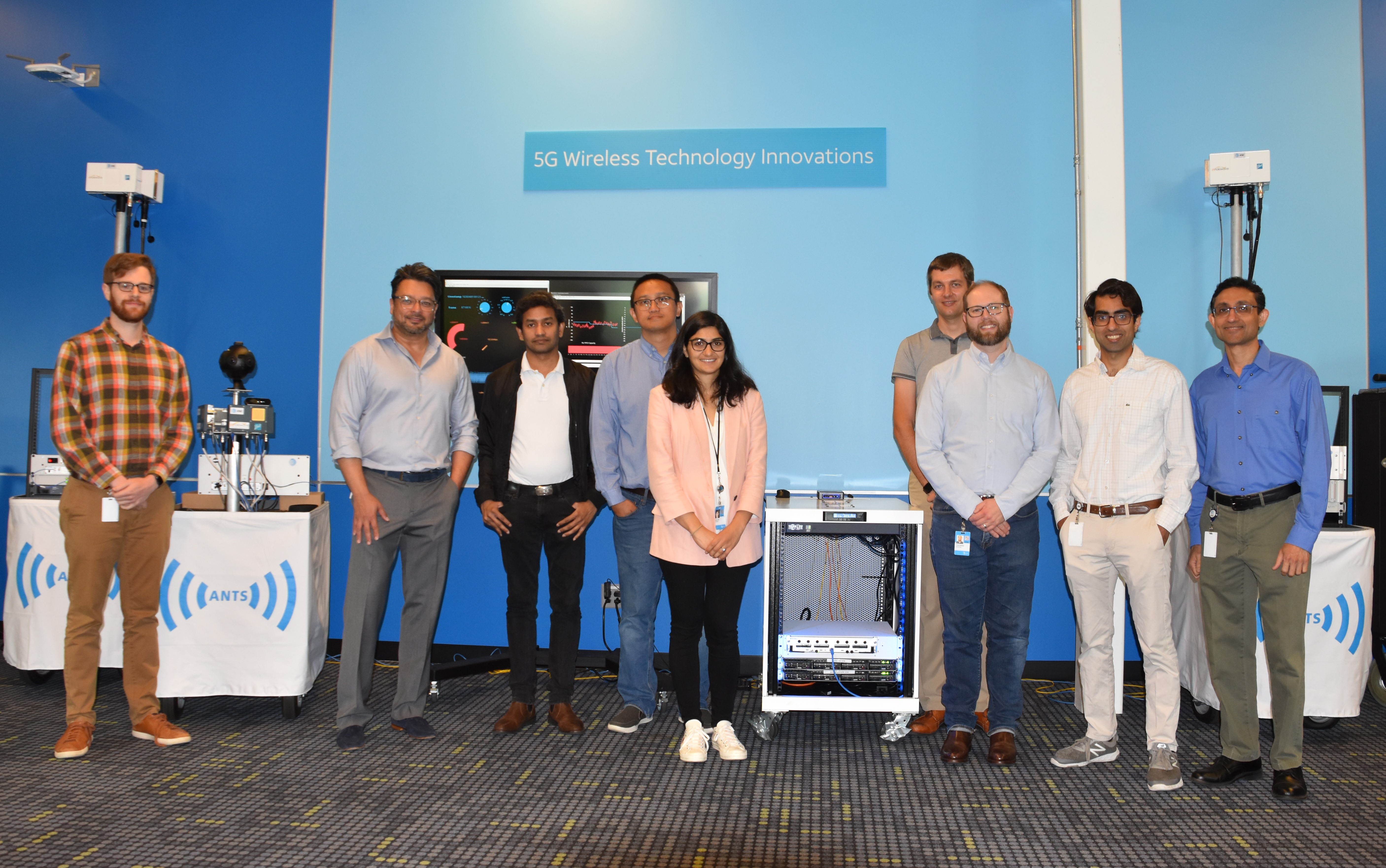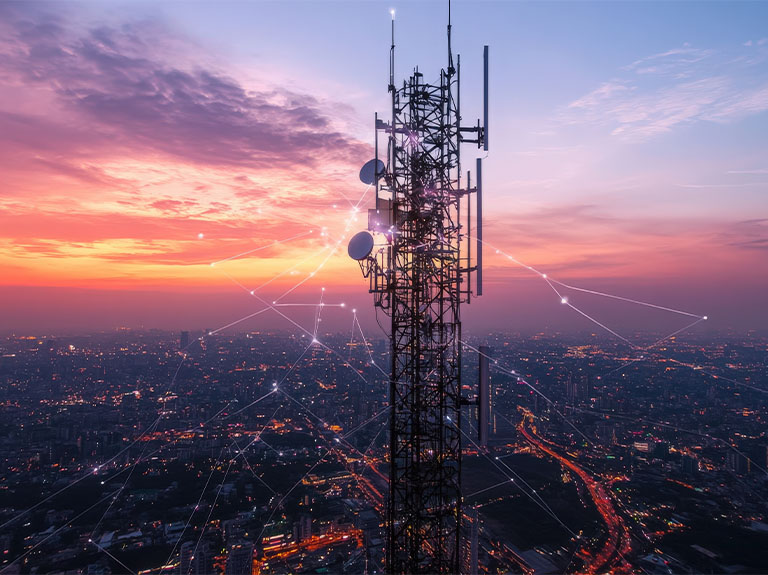
ANTS, a PANDA and a ROACH are talking to each other in a Lab.
It may sound like the beginning of a children’s story, but it’s a real scenario at our 5G Labs in Austin. And these first-of-their-kind, high-tech critters are helping us explore the vast and unchartered potential of 5G.
Why would we want ANTS in our lab?
When we began working with millimeter wave in 2011, little was known about how mobile networks would perform in such high frequency bands. We had deep knowledge of traditional cellular spectrum from decades of experience spanning four generations of our mobile wireless network, as well as its primary applications in talk and text. But mmWave was fundamentally different. From the way it interacts with the environment to the design of its physical layer and antenna hardware, mmWave is a whole new frontier. And so is its potential.
Millimeter wave’s ultra-high speed and capacity and ultra-low latency, particularly when combined, can enable applications that would’ve been unimaginable with previous mobile networks. But to unleash its potential, we had to better understand how mobile 5G networks would operate in this spectrum. We needed a way to watch it in action before it was deployed.
So, as we’ve often done in our 143-year history, we became pioneers. We built a first-of-its-kind mmWave prototyping and testbed platform.
We debuted our proprietary Advanced 5G NR Testbed System (ANTS) in 2018. It’s a 5G RAN solution designed and built entirely in-house at our 5G Labs in Austin using white-box, off-the-shelf hardware components, as well as modular software that aligns with our O-RAN Alliance initiatives. Although developed for two-way communication, the system can also be used for sensing radio waves through channel sounding. This flexibility enabled an important first step in understanding mmWave – being able to map it.
Channel sounding is like a sonar that uses radio waves instead of sound waves. It allows us to create a detailed 3D heat-map that shows where signals are coming from. Based on this data we can model the mmWave channel, a technique widely used to design equipment and 5G standards protocols as well as plan and optimize 5G networks.
One of the first channel sounders we built, affectionately called “the porcupine” due to its spikey horn antenna array, tracks and measures how mmWave signals interact with objects like trees, buildings, cars and people. When we built it in 2017, it was one of the world’s fastest omni-directional channel sounders, capable of taking 360 measurements every 150 milliseconds. Having these insights was key in moving our early experimentation from the lab to field trials, long before we launched our commercial 5G network.
The more we learned, the better ANTS solutions we were able to build.
As our first-generation testbed system, the porcupine’s size and weight weren’t ideal for transporting and testing in most mobile environments. So, we created a smaller solution called the Path-Loss and Network Data Analyzer (PANDA).
PANDA was our first truly portable channel sounding unit and has been useful in exploring mmWave in the vehicle-to-vehicle (V2V) channel. Little is known about how mmWave will interact between two vehicles moving at high rates of speed, so we used PANDA to take some of the world’s first V2V mmWave channel measurements. Many of the resulting models we’ve developed have been adopted as industrywide 5G standards and are providing important insights into V2V mmWave frequencies that will open up exciting use cases for 5G, including self-driving cars.
Even with PANDA’s advanced capabilities, we saw opportunities to further improve the reliability of our models with even more data, and developed an even faster, more portable and more powerful unit. This is our Real-Time Omni-Directional Channel Sounder (ROACH).
ROACH was designed as part of our outdoor testbed, to be mounted on a vehicle as a zero-touch solution. It has multiple cameras, GPS and four phased arrays that continuously sweep for mmWave beams and collect up to 6,000 measurements per minute as we drive through target areas. We have plans to synch this data with VR goggles, which will enable us to do things like explore network resources, identify the source of poor or unexpected signal strength or identify optimal locations to place network equipment.
As we continue to deploy 5G, having ROACH installed on our vehicles in the field could enable us to monitor network resources and explore the 5G ecosystem more deeply than is practical or imaginable right now. And that’s just the beginning of the possibilities.
Currently, we’re focused on building a more expansive outdoor testbed, where we can collaborate with other industry leaders on the opportunities around vehicle-to-everything (V2X) applications. And we’re looking at indoor testbed expansions as well, and the possibility of connecting ANTS to new equipment to explore new ways mmWave can be applied in customer environments.
The importance of ANTS.
What we’re learning through ANTS is helping lay the foundation for 5G. Not just at AT&T, but across the industry.
As we discover and innovate around mmWave, we’re sharing key findings with the organization setting the global specifications for 5G, the 3rd Generation Partnership Project (3GPP). Some of those insights and techniques have already been incorporated into the 3GPP standards that are providing the foundation of how 5G will be built industrywide. These contributions are possible because ANTS is providing the understanding we need for innovation to flourish.
ANTS is currently enabling our team to explore new concepts in network coding, multi-point transmission and compressed beam scanning that could allow mmWave to provide ultra-reliable communication at high mobility speeds. Conventional wisdom has been that mmWave may not be the ideal choice for reliable mobile solutions given some of the characteristics of its signals. At high frequencies, signals can be hindered by obstacles and tend to travel short distances. But where we see challenges, we also see opportunities to innovate. And ANTS is where these pioneering innovations take their first baby steps.
So we welcome ANTS in our lab, along with the porcupine, PANDA and ROACH. They’re helping us build the high performance, highly reliable 5G network we’re deploying today. And they’ll continue to provide the learning playground we need to explore the new customer applications of tomorrow.


